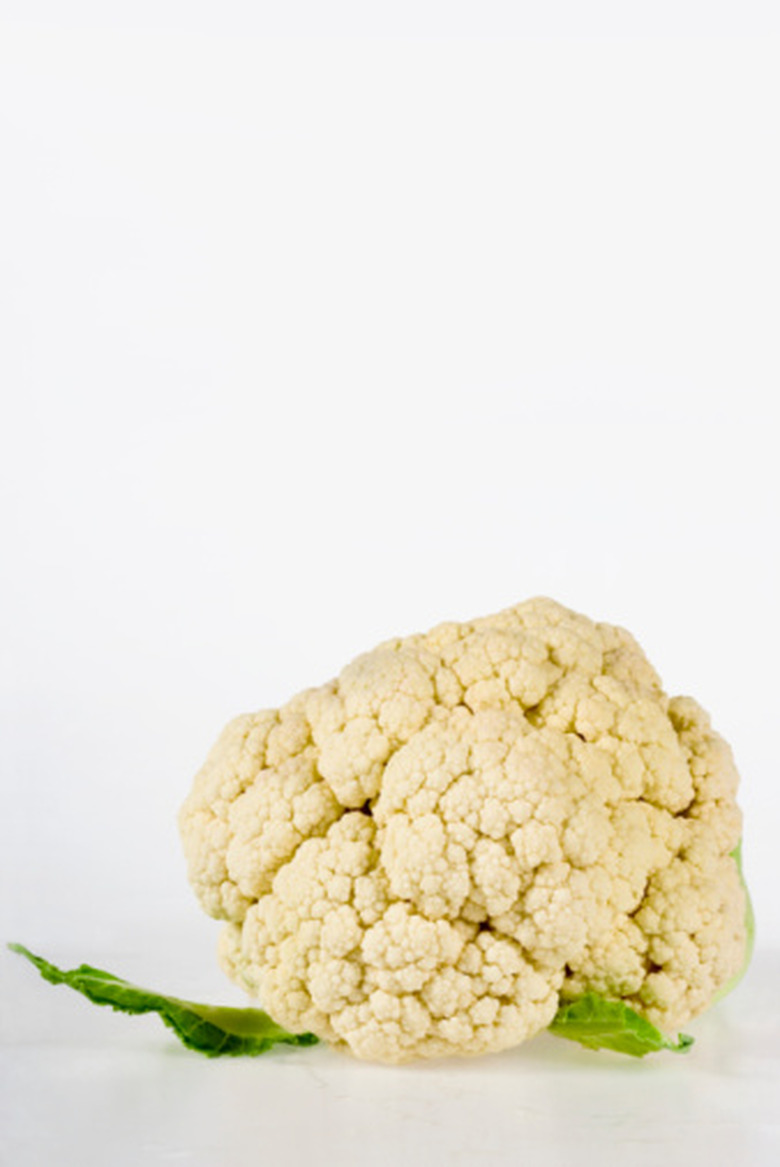How To Tell When A Cauliflower Is Ripe
Cauliflower is a cold season vegetable. Unlike broccoli or kale, cauliflower is demanding to grow. It requires an average temperature between 60 and 65 degrees Fahrenheit and fails if the temperature varies even slightly. Cauliflower can be planted two to three weeks before the last spring frost. Once the plant has experienced growth, it bolts if left in temperatures lower than 60 F for more than 10 days. It is important to plant cauliflower early and harvest the vegetable as soon as it is ready. A simple visual test tells you when the cauliflower is ready to harvest.
- Cauliflower is a cold season vegetable.
- Cauliflower can be planted two to three weeks before the last spring frost.
Step 1
Plant your transplants and mark on the calendar 60 to 70 days from the plant date.
Step 2
Check the cauliflower between 60 and 70 days later.
Step 3
Inspect the head. It should be 6 to 8 inches in diameter for most common cauliflower varieties.
Step 4
Inspect the curds of the cauliflower head. They should be blanched, firm and compact. Harvest before the curds separate.
- Plant your transplants and mark on the calendar 60 to 70 days from the plant date.
- Check the cauliflower between 60 and 70 days later.
Step 5
Cut the main stem leading to the cauliflower head to remove it. Retain a set of leaves around the head to protect it.
Varieties Of Cauliflower
The edible portion of the cauliflower plant is actually the head of flower buds, called the curd. Traditionally, cauliflower curds are pure white, appearing as a single growth without side shoots. Several white varieties are commonly available. In addition to the common, white cauliflower, hybridized varieties such as the cultivar "Cheddar" develop bright orange curds. Romanesco produces heads with a mild, nutty taste reminiscent of broccoli. Cauliflower prefers neutral pH soil and needs only average amounts of water, although you should water your seedlings every few days until they are established. Fertilize your plants every few weeks with a formula labeled suitable for vegetables. Cauliflower is susceptible to several pests, including aphids, cabbage loopers, cabbage worms, cutworms and root maggots.
- Cut the main stem leading to the cauliflower head to remove it.
- In addition to the common, white cauliflower, hybridized varieties such as the cultivar "Cheddar" develop bright orange curds.
Things Needed
- Calendar
- Knife
